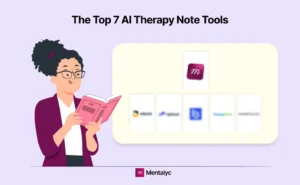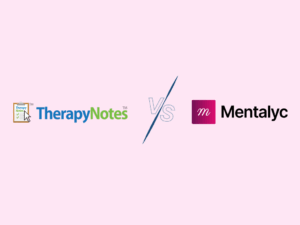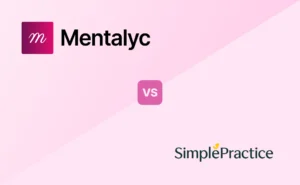The Columbia Suicide Severity Rating Scale (C-SSRS) is a standardized, evidence-based assessment tool developed to help clinicians identify the severity and immediacy of suicidal ideation and behaviors in clients. Originally developed through a collaboration between Columbia University, the University of Pennsylvania, and the University of Pittsburgh, it has since become one of the most widely used tools for suicide risk assessment in both clinical and research settings. The C-SSRS helps distinguish between levels of risk and provides a common language for understanding suicidal ideation, which can support continuity of care across providers.
Columbia Suicide Severity Rating Scale Short Version
The short version of the C-SSRS, commonly referred to as the screener, is a condensed form of the original tool designed for use in a wide range of clinical and non-clinical settings. This version contains just a few essential questions to quickly evaluate whether a person has experienced suicidal thoughts or behaviors. It is practical for use in therapy sessions, emergency rooms, schools, and even during telehealth appointments, offering a rapid means of identifying immediate risk (Bjureberg et al., 2022.)
Purpose of the Columbia Suicide Severity Rating Scale (C-SSRS) in Mental Health Settings
In therapeutic settings, the C-SSRS serves as a vital screening tool for identifying suicide risk at intake, during ongoing treatment, or when a client presents with signs of distress. It helps therapists differentiate between passive thoughts of death and more active suicidal ideation with a plan, enabling timely intervention. For clinicians in outpatient therapy, inpatient care, or crisis settings, the C-SSRS provides a structured way to assess risk while also reducing stigma around asking direct questions about suicide. It is increasingly used in many medical facilities, including hospitals, cancer centers and hospice organizations (Simpson et al., 2021.)
Who Should Use the C-SSRS Screener?
The C-SSRS can be administered by a wide range of professionals, including licensed therapists, counselors, nurses, physicians, and trained paraprofessionals. It is designed to be accessible to non-clinicians as well, such as school staff or first responders, provided they complete the appropriate training. In therapy, it is particularly useful for clinicians who work with high-risk populations such as adolescents, trauma survivors, or individuals with mood disorders.

New! Transfer your notes to EHR with a single click. No more copy-pasting.
Structure of the Columbia Suicide Severity Rating Scale Screener
The screener consists of a series of yes/no questions that assess both suicidal ideation and behavior. The ideation section explores the presence, frequency, and severity of suicidal thoughts, while the behavior section captures any past suicide attempts, preparatory actions, or self-injurious behavior with suicidal intent. Each item is phrased in a clear, conversational tone to reduce defensiveness and encourage honest responses from clients.
How to Administer the C-SSRS Screener
Therapists can administer the screener verbally during a session or integrate it into intake paperwork. It’s important to create a nonjudgmental and supportive environment when asking these questions, ensuring that the client understands the purpose is to keep them safe—not to pathologize them. When a client exhibits suicidal ideation or behavior, clinicians should follow up with a risk assessment and safety planning as appropriate.
Columbia-Suicide Severity Rating Scale Scoring and Interpretation
Scoring the C-SSRS involves identifying the highest level of ideation and/or behavior the client reports. While there isn’t a numerical score like many other assessments, the responses help determine the level of risk: low, moderate, or high. Therapists should use clinical judgment in conjunction with the responses to make informed decisions about next steps, such as increased monitoring, referrals, or hospitalization (Chung et al., 2023.)
Columbia-Suicide Severity Rating Scale Age Range
The C-SSRS is validated for use across the lifespan, including with children as young as six years old. When used with children or adolescents, it’s critical to adjust language to ensure comprehension and approach the questions with additional sensitivity. The scale is also applicable to older adults, making it a versatile option for clinicians across specialties (Schwartzman, Muscatello, & Corbett, 2023.)
When to Use the C-SSRS in Therapy
The C-SSRS can be used at intake to establish a baseline, during high-risk periods or whenever a client discloses distressing symptoms. Regular reassessment is recommended if the client has a known history of suicidal ideation or behavior. Some therapists also use it routinely during check-ins with clients in high-risk groups.
Ethical and Legal Considerations for Using the Columbia Suicide Severity Rating Scale
Using the C-SSRS touches on essential ethical duties, including the therapist’s responsibility to assess and respond to suicide risk. Proper documentation of the assessment and any subsequent actions is crucial in case of liability issues. Therapists should also inform clients about limits of confidentiality when discussing suicidal thoughts and ensure they have procedures in place for crisis response, especially in private practice or telehealth settings (Liew et al., 2023.)
Integrating C-SSRS Results Into Treatment Planning
When a client indicates suicidal ideation or behavior, therapists should incorporate this information into the treatment plan. This might include increasing session frequency, developing a safety plan, coordinating with a psychiatrist, or involving family members when appropriate. The C-SSRS results can also help guide therapeutic goals focused on distress tolerance, emotion regulation, or social support (Syndergaard et al., 2023.)
Training and Certification for C-SSRS Use
While the screener is straightforward to use, training is strongly recommended to ensure accuracy and confidence in administering it. The Columbia Lighthouse Project offers free online training and certification for both clinical and non-clinical users. This can be especially helpful for therapists who supervise interns or work in integrated care teams.
Can I Use the C-SSRS in Teletherapy?
Yes, the C-SSRS is fully adaptable to teletherapy. Whether administered via phone or video call, it can be just as effective as in-person, provided the therapist ensures privacy and has an emergency response plan in place. This includes knowing the client’s physical location during the session and having local emergency contacts readily available.
Does the Columbia Suicide Severity Rating Scale Provide a Diagnosis?
The C-SSRS is not a diagnostic tool. Rather, it is a screening instrument that informs clinical judgment about suicide risk. While it complements diagnostic assessments, it should not be used in isolation to determine a mental health diagnosis.
How Often Should I Use the C-SSRS With a Client?
Frequency depends on the client’s presentation and history. For clients with active suicidal ideation, weekly or even session-by-session use may be warranted. For others, it may only be needed during intake or when new symptoms emerge. Therapists should consider regular use with clients who have chronic suicidal thoughts, histories of attempts, or significant life stressors.
Is the Columbia Suicide Severity Rating Scale (C-SSRS) Evidence-Based?
Yes, the C-SSRS is backed by robust research and has been shown to predict suicidal behavior more accurately than many other tools. It has been used in large-scale studies, clinical trials, and community settings around the world. Its reliability, validity, and ease of use have made it a cornerstone in suicide prevention efforts globally.
Case Example: Using the C-SSRS in a Therapy Session
Samantha, a 27-year-old client with a history of depression, begins to show signs of emotional withdrawal and hopelessness in her weekly therapy sessions. During a check-in, she vaguely mentions “not wanting to be here anymore.” Her therapist, Allison, recognizes this as a potential red flag and calmly introduces the Columbia Suicide Severity Rating Scale (C-SSRS) to assess the situation more thoroughly.
Allison explains the purpose of the screener in a supportive way, saying, “I want to make sure I understand how you’re feeling and help keep you safe. I’m going to ask you a few standard questions that many clinicians use when someone is feeling this low.” Using the short version of the C-SSRS, she asks Samantha about suicidal ideation, including whether Samantha has had thoughts of killing herself, any intent, a plan, or past suicidal behavior.
Samantha reveals she has been having passive suicidal thoughts for the past week but denies any plan or intent to act on them. She also denies any previous attempts. Based on the C-SSRS responses, the therapist determines that Samantha is at low to moderate risk and collaboratively develops a safety plan with her. This includes identifying warning signs, coping strategies, and supportive contacts, along with scheduling an additional check-in later that week.
Allison documents the C-SSRS results and the clinical decision-making process, integrating the findings into Samantha’s treatment plan by increasing session frequency and focusing on distress tolerance skills. Over the next few weeks, Allison continues to use the screener every other session to monitor changes in risk.
Conclusion
The Columbia Suicide Severity Rating Scale (C-SSRS) is a vital tool for therapists to assess suicide risk clearly and compassionately. Whether used during intake, in response to clinical changes, or as part of ongoing risk monitoring, it provides a structured yet flexible framework that supports ethical practice and client safety. By integrating the C-SSRS into routine clinical work, therapists can foster open conversations about suicidal ideation and take proactive steps to prevent harm while building trust and resilience in the therapeutic relationship.
Resources
Bjureberg, J., Dahlin, M., Carlborg, A., Edberg, H., Haglund, A., & Runeson, B. (2022). Columbia-Suicide Severity Rating Scale Screen Version: initial screening for suicide risk in a psychiatric emergency department. Psychological medicine, 52(16), 3904-3912.
Schwartzman, J. M., Muscatello, R. A., & Corbett, B. A. (2023). Assessing suicidal thoughts and behaviors and nonsuicidal self-injury in autistic and non-autistic early adolescents using the Columbia Suicide Severity Rating Scale. Autism, 27(8), 2310-2323.
Simpson, S. A., Goans, C., Loh, R., Ryall, K., Middleton, M. C., & Dalton, A. (2021). Suicidal ideation is insensitive to suicide risk after emergency department discharge: Performance characteristics of the Columbia‐Suicide Severity Rating Scale Screener. Academic Emergency Medicine, 28(6), 621-629.
Chung, T. H., Hanley, K., Le, Y. C., Merchant, A., Nascimento, F., De Figueiredo, J. M., … & Selvaraj, S. (2023). A validation study of PHQ-9 suicide item with the Columbia Suicide Severity Rating Scale in outpatients with mood disorders at National Network of Depression Centers. Journal of affective disorders, 320, 590-594.
Syndergaard, S., Borger, J., Klenzak, S., Grello, A., & Adams, A. (2023). Implementation of Columbia Suicide Severity Rating Scale (C-SSRS) as a universal suicide risk screening tool in a high volume emergency department. Archives of suicide research, 27(2), 769-779.
Liew, A., Monkman, H., Palmer, R., Kollaja, L., Rodriguez, K., Ijams, S., … & Lesselroth, B. (2023, April). A telepsychiatry simulation for suicide assessment: teaching telemedicine safety competencies. In AMIA annual symposium proceedings (Vol. 2022, p. 700).
Why other mental health professionals love Mentalyc

“A lot of my clients love the functionality where I can send them a summary of what we addressed during the session, and they find it very helpful and enlightening.”
Therapist

“It takes me less than 5 minutes to complete notes … it’s a huge time saver, a huge stress reliever.”
Licensed Marriage and Family Therapist

“By the end of the day, usually by the end of the session, I have my documentation done. I have a thorough, comprehensive note … It’s just saving me hours every week.”
CDCII

“Having Mentalyc take away some of the work from me has allowed me to be more present when I’m in session with clients … it took a lot of pressure off.”
LPC






